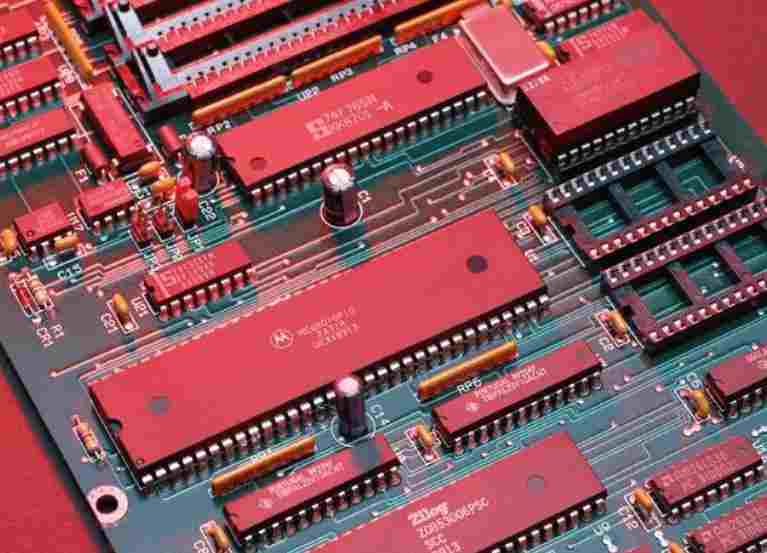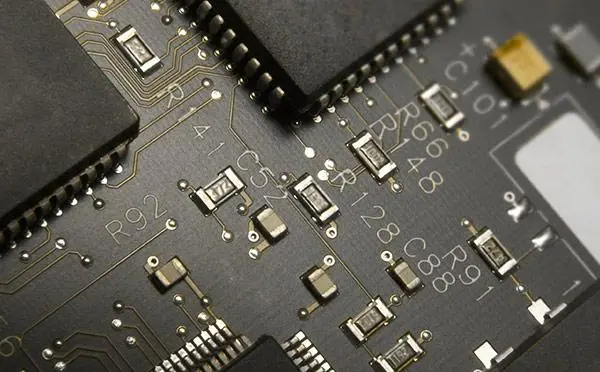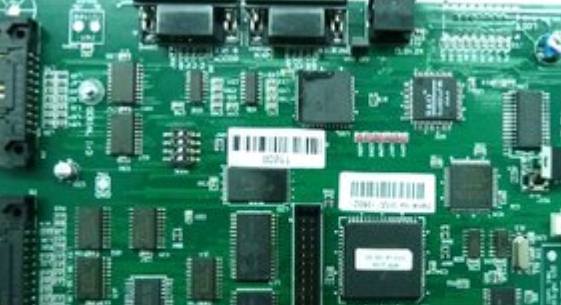
SMT reflow temperature straight line and curve
Because the main point of the whole reflow welding process is to control the temperature and time of each point in the welding process, the temperature curve is a common and important process management tool
Basically, if we can increase the temperature of the welding end to make it exceed its melting temperature (but not exceed the product safety temperature), without increasing the temperature too fast (to avoid thermal shock damage), and keep it for an appropriate time after controlled cooling (to provide appropriate heat). It is possible for us to meet the welding requirements.
In fact, this is difficult to do. There are three main problems. First, our actual products have different equipment and wiring, which means that there are differences in heat capacities at different points on PCBs.
It may have exceeded the safe temperature and caused damage. However, if we reduce the temperature to point A to meet the requirements, another cold welding failure may occur at point B.
The second problem faced by the temperature line is that in the actual welding, we must first deal with the useless components in the solder paste to make them completely and gently volatilize. This volatilization process has different requirements for different solder pastes.
Circuit board

However, due to the presence of solvent, stabilizer, thinner and thickener in solder paste, the time and temperature required for each component to volatilize are different We may not be able to pass this straight line due to the above hot and cold spots Done In the case of uncomplicated product design (small heat capacity gap and large safety window), we can meet the requirements by slowing down the heating speed, but it generally takes about 200 degrees from room temperature to peak temperature (lead free technology is higher) This is also a problem for users who need rapid production
The third problem is that PCB design usually involves many different equipment data and packaging. Most of the reflow furnaces we used before are hot air technology Air itself is not a good heat conductor, and its heat transfer must depend on convection Air flow control is a difficult process, let alone it must be controlled to such a small area precision SMT welding termination, it is almost impossible to do well In addition, the component layout is related to the flow of PCBs. For us, it is difficult to deal with the temperature and time relationship of various points on the surface This has caused us to have a â curveâ That can be flexibly set and adjusted if we want to solve all solver related problems (such as solver balls, pores, tin absorption, etc.)
Timg reflux temperature curve:
If we want to avoid the above temperature linear problem, and have better processing capacity. The whole reflow welding process can be divided into 5 steps. That is, 1. Warm up 2. Constant temperature; 3. Welding; 4. Welding; 5. Cooling
The purpose of the first step of temperature rise is to make the temperature of each point on the polychlorinated biphenyl enter the working state as soon as possible without damaging the product. The so-called working state is that the solder paste components unfavorable to welding begin to volatilize.
The constant temperature zone has two functions. One is constant temperature, which provides enough time for the temperature of the cold spot to catch up with the hot spot. When the temperature of solder joint is close to the temperature of hot air, the heating speed is slow. We use this phenomenon to make the temperature of the cold spot gradually approach the temperature of the hot spot. The purpose of making the hot spot and cold spot temperatures close is to reduce the amplitude of the peak temperature difference when entering the flux and welding area, so as to control the quality of solder joints and ensure consistency. The second function of the constant temperature zone is to volatilize the useless chemical components in the solder paste.
The welding process is when the active substance (flux) in the solder paste plays a role. The temperature and time at this time provide the starting conditions for the flux to clean the oxide.
When the temperature enters the welding area, enough heat is provided to melt the metal particles of the solder paste. Generally, the melting point of the data used for the soldering end of the device and PCB pad is higher than the solder paste. The starting temperature of this area is determined by the characteristics of the solder paste. For example, the temperature of 63Sn37 solder paste is 183oC. When the temperature rises above this temperature, the temperature must continue to rise and remain for enough time so that the molten solder paste has sufficient wettability, and IMC can be formed between the solder end of the device and the PCB pad.
The function of the final cooling zone is to restore polychlorinated biphenyls to room temperature for subsequent operation, and the cooling rate can also control the microcrystalline structure in the solder joint. This affects the life of the solder joint.
Relationship between reflow soldering process faults and curves:
In the above five reflow welding processes, each part has its role, and the relevant failure modes are also different. The key to handling these process problems lies in understanding and judging the relationship between failure modes and processes.
For example, in the first heating process, faults caused by improper settings may be problems such as "gas explosion", "solder ball caused by tin splash" and "data thermal shock damage".
The problems caused by the constant temperature process may be "thermal collapse", "tin bridging", "high residue", "tin ball", "poor wetting", "pores", "tombstone", etc.
Problems related to the welding process include "solder ball", "poor wetting", "poor solder", and so on.
Problems related to improper setting of welding process may be "poor wetting", "tin absorption", "tin shrinkage", "tin ball", "poor IMC formation", "tombstone", "overheating damage", "cold welding", "coking", "welding end dissolution", etc.
The problems that may be caused by cooling are generally less and lighter. However, if the setting is incorrect, it may also affect the life of the solder joint If you enter a surface mount cleaning process immediately, it may cause the detergent to penetrate, making it difficult to clean
It must be noted that the first four processes are coherent and related to each other. Recall that failure modes are not always easy to distinguish. For example, "tombstone" and "solder ball" failures usually require comprehensive adjustment to completely solve the problem.







